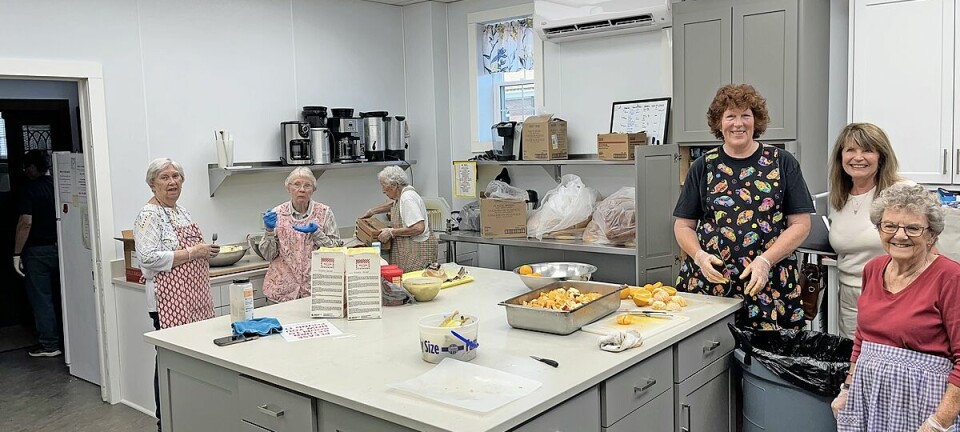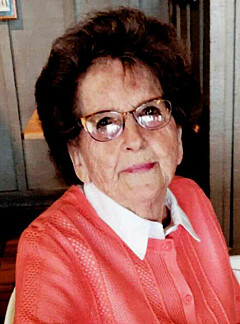Master Gardener program digs into fall bulb planting techniques
OSU Extension’s Sabrina Schirtzinger leads hands-on session on preparing soil, choosing bulbs, and ensuring vibrant spring blooms
Master Gardener Coordinator Sabrina Schirtzinger, left, shows bulbs to Elizabeth Auerbach during a fall planting program at the Ramser 4-H Activity Center on Oct. 9.
Denise Neff
Gardeners gathered in Mount Vernon on Oct. 9 as Sabrina Schirtzinger, Agricultural and Natural Resources Educator and Master Gardener Coordinator with The Ohio State University Extension, presented a program on fall planting for spring bulbs at the Ramser 4-H Activity Center. Hosted and sponsored by the Knox County Master Gardener Volunteers, the evening combined practical instruction, demonstrations, refreshments, and prizes.
Schirtzinger explained that fall is the proper season to plant spring-flowering bulbs such as daffodils, crocuses, and tulips. Planting should be done between September and November, after the soil temperature cools below 55 degrees but before the ground freezes. This timing allows the bulbs to establish roots over the winter, a necessary chilling period for spring blooms. Tulips and daffodils should be placed with the pointy part of the bulb up and the root down to ensure proper growth.
The audience also learned about the different types of underground plant structures commonly referred to as “bulbs.” True bulbs include Asiatic lilies and tulips. Tubers, such as dahlias, have leathery skin and eyes. Rhizomes, like iris, are underground stems that grow just below the soil surface. Corms, such as crocus and gladiolus, are compressed stems containing food with a bud on top. To illustrate the differences, Schirtzinger passed around Caladium bulbs for attendees to examine.
Planting depth varies, but a general rule is to place bulbs two to three times their own height beneath the soil. For Ohio gardens, hardy bulb options include crocus, daffodils, hyacinths, snowdrops, tulips, grape hyacinths, allium, and lily of the valley.
Schirtzinger explained the distinction between hardy and tender bulbs. Hardy bulbs are planted in the fall, bloom in spring or early summer, and can remain in the ground year after year with minimal care. Tender bulbs, however, must be planted in the spring once the soil has warmed up, bloom in the summer, and cannot survive cold winters. These must be dug up and stored each fall.
When purchasing bulbs, quality matters more than the place of purchase. Bulbs should be firm, free from cuts, bruises, or disease, and covered with a protective papery skin. Mushy or soft bulbs should be avoided. Schirtzinger passed around softer bulbs as a clear example of what not to buy. Hardy bulbs are best purchased in August or September, with planting from mid-September through late October or early November. Tender bulbs should be purchased in late winter or early spring, with some able to be started indoors.
Location also influences success. Bulbs should be planted in rich, well-drained soil and kept out of low-lying areas where frost can settle. Wind-sheltered sites are ideal, while southern or western exposures near building foundations may warm too quickly in early spring, increasing the risk of cold damage. Adequate light is essential, as the more energy bulbs receive through photosynthesis, the stronger they will bloom the following year.
Care tips included allowing foliage to die back naturally after blooms fade, watering thoroughly in both fall and spring, and labeling plantings to avoid accidental digging. Gardeners were advised to protect bulbs from squirrels and chipmunks with chicken wire. Schirtzinger also explained how to clean and store bulbs for future use. She showed the group her favorite tool — a soil knife with depth markings etched on the blade, available at local retailers such as Lowe’s and Keim — that makes planting easier and more precise.
Master Gardeners in attendance included Elizabeth Auerbach, Barb Wills, Jamie Robyn, and Carma Kauffman. The Knox County Master Gardeners meet on the second Tuesday of each month at 6:30 p.m. at the Ramser 4-H Activity Center.
The Ohio State University Extension Master Gardener Volunteer Program provides horticulture training to Ohio residents who, in turn, share their knowledge with the community through education and service. In Knox County, the program began in the early 1990s and has grown to include 22 active volunteers.
For more information about the Master Gardener Program or upcoming events, contact Schirtzinger at schirtzinger.55@osu.edu or 740-397-0401, or visit knox.osu.edu.
So, while the chill of fall sets in, it’s the perfect time to think ahead. Planting bulbs now is like planting a promise — come spring, the garden will repay the effort with a burst of color and life.















































